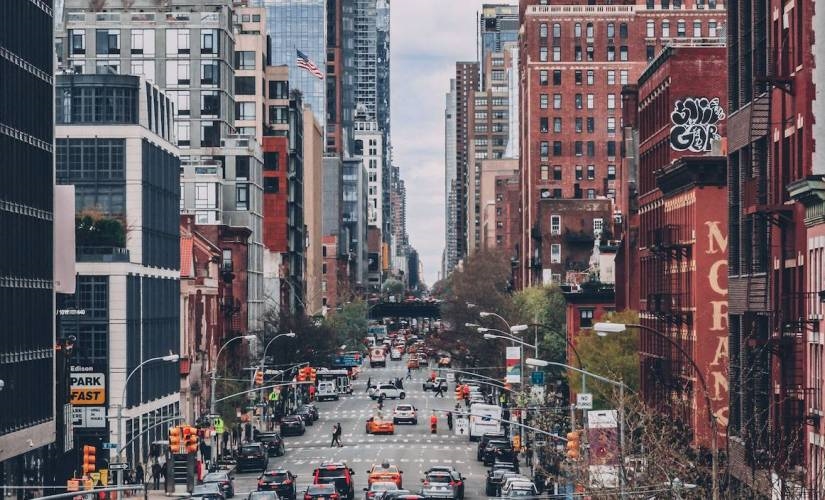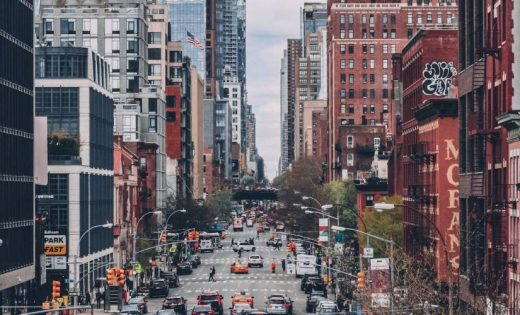Navigating the New Normal: How Cities are Using Data to Adjust for New Norms
Navigating the New Normal: How Cities are Using Data to Adjust for New Norms

Cities, college campuses, and communities of all shapes and sizes use smart technologies to help keep their residents safe, city operations efficient and improve local quality of life. But whether it’s smart lighting, connected vehicles, networked intersections, or smart buildings, the real value is in the data being collected. This in turn can be used to provide the types of crucial insights used to make long-term planning and improvement decisions.
Navigating the New Normal: How Cities are Using Data to Adjust for New Norms
When it comes to traffic patterns, this kind of data can help governments identify their most congested and hazardous streets and intersections – and in turn plan for ways to reduce travel times and traffic-related injuries and fatalities.
Predictable traffic patterns are no longer predictable
Historically, the use of travel demand surveys and sophisticated traffic simulations and models has accomplished this work. These technologies relied on predictable traffic patterns based on years of ground-truth movement data.
However, our traffic patterns are no longer well understood or predictable due to the ongoing pandemic. Most people are no longer commuting to and from work. Visitors aren’t coming in and out of cities on the weekends, traffic to and from airports has largely disappeared, and commercial vehicles are delivering different goods to different locations and at different frequencies.
The pandemic has altered everything that we previously knew to be “normal.”
Governments now need to invest in solutions that can recharacterize this new and fluid post-pandemic normal by putting an increased emphasis on more versatile Intelligent Transportation Systems (ITS) solutions that can give transient and near real-time transportation insights.
At its core, the value that intelligent transportation systems can provide governments and other businesses has been well known throughout the transportation industry. Others (including additional government entities) also realize this potential from both an operational and financial standpoint. They have added emphasis on use cases such as recharacterizing post-pandemic local traffic profiles.
Changes in large city shifts and dwelling
For instance, with many companies publicly stating that their employees will continue to work from home permanently and a lion’s share of their children still attend school virtually, we see a major shift in people leaving big cities like New York City, San Francisco and Toronto.
Many people are migrating to the suburbs. In fact, during the second quarter of 2020, Realtor.com’s quarterly Cross Market Demand Report found that 51 percent of property searches on the site from city residents in the nation’s 100 largest metro areas were for homes in the suburbs of those metro areas. This was a record high since the website began tracking that data in 2017.
The migration
This migration will have a major impact on traffic patterns, potentially reducing traffic in major metropolitan areas and increasing both consumer and commercial traffic in suburban jurisdictions. Without a detailed understanding of these changes, traffic engineers and signal operations cannot make the necessary adjustments to their traffic infrastructure.
Fortunately, unlike the abrupt pandemic-driven changes in traffic patterns that cities have been dealing with over the past several months, governments have more advanced opportunities to prepare for this newer migration trend.
As a result, we are going to see a growing interest from some of these smaller cities to acquire near real-time transportation analytics products and services to manage this trend better.
This is where a source of probe-based transportation data can add value, and in particular where aggregated connected-vehicle insights such as what is offered by Geotab are of increasing interest.
Data driving solutions
These relatively low-cost solutions (compared to legacy systems) can be used to make more informed decisions on how to improve traffic based on real-world driving characteristics. More specifically, they can enable cities to:
- Reduce surface congestion and streamline the movement of people and commercial goods
- Minimize traffic-related injuries and fatalities
- Maximize operating efficiencies and reduce traffic operations costs
These solutions can help governments build better and more accurate local traffic models capable of adapting to real-world spatial and temporal traffic variations. For instance, insights on traffic speed, bottlenecks, traffic signal efficiency, driving behaviors and much more can be gleaned from these solutions. They can also identify when and where there are hazardous driving conditions.
With the pandemic definitely putting a spotlight on the need for more modernized public services, many governments are looking for ways to become more nimble and versatile.
As a result, governments will be moving toward adopting these kinds of new and innovative technologies to streamline operations and automate services at a much lower cost compared to more intrusive alternatives. For example, many are using expensive legacy systems for monitoring, planning and managing traffic operations.
The majority of these systems are static and therefore only collect traffic information in set locations. While these systems have worked for cities or transportation departments during more normal, pre-pandemic times, new and our volatile post-pandemic world needs more versatile technologies.
Cities need to make investments in smart city technologies that will continue to adapt and scale to ever-changing environments.
Understanding operations
Government organizations have begun to understand the importance and true benefit of modernizing their operations. However, there may now be fewer resources and more scrutiny around allocating net new spending for these technology initiatives.
Geotab offers solutions that can help governments modernize their operations while providing them with a net positive return on their investment. In particular, by harnessing the power of connected vehicles, we provide relatively inexpensive intelligent transportation solutions and data insights to several government organizations.
Bringing Smarter Streets to Las Vegas
While planning for the post-COVID landscape is by nature almost entirely theoretical at this point, some of the potential transportation solutions that could be used to navigate it are already in place to some extent.
Earlier this year, a white paper published by Geotab outlined some of the progress being made in Las Vegas using smart city technologies that can help create just the sort of data-driven insights cities will need when adapting to an uncertain future.
Geotab, along with Waycare and the Regional Transportation Commission of Southern Nevada (RTC), collaborate to create a first-of-its-kind product that utilizes data-driven analytics and actions to support traffic signal operations.
Each partner contributed a unique set of skills to the project, with Geotab processing and analyzing the traffic data, Waycare applying the data to its traffic management platform, and RTC using the results to formulate long-term traffic plans.
Data to correlate
Thanks to data processed from millions of connected vehicles, as well as additional third-party data sets, Geotab was able to gain a larger understanding in a number of key areas:
- Traffic queue lengths per intersection per time of day per turning movement
- Average dwell or stop times per intersection per time of day per turning movement
- Signal cycles per queue (how many green lights to clear a queue)
- Corridor travel time
- Corridor stop propensity
How insights serve the community
These insights can help equip traffic engineers with the necessary intelligence to move residents and commercial goods more efficiently. Data understanding helps cities to implement and effectively manage traffic calming and road improvement projects, and proactively deploy first responders to critical areas in an effort to reduce on-site arrival times.
Crucial data
By adopting these new and innovative capabilities, cities can make an immediate and positive impact on their transportation networks. In addition, cities can gather crucial data to help them make informed decisions for years to come.
In the era of big data and the Internet of Things, and with an increasingly large number of connected vehicles, we can generate insights that were not possible before.
By leveraging cloud infrastructure and machine learning techniques, we can create smarter cities that provide more data and enable governments to adapt and improve continually.
Image Credit: craig adderley; pexels; thank you!
The post Navigating the New Normal: How Cities are Using Data to Adjust for New Norms appeared first on ReadWrite.
(28)


